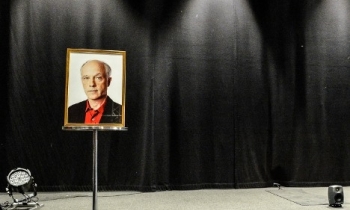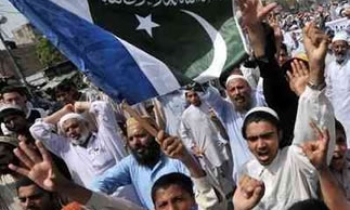The big three of the Indian newspaper market – Dainik Jagran, Dainik Bhaskar and Eenadu – have retained their position, according to the just-released findings of the National Readership Survey (NRS) 2006. And yes, there is not a single English daily in the Top 10 bracket.

Dainik Jagran with a readership base of 21,165,000 remains the most widely read newspaper despite a drop in its readership from 21,244,000 in NRS 2005. Dainik Bhaskar has narrowed the gap considerably – it registered a growth in readership at 20,958,000 from the 17,379,000 figure in NRS 2005. The gap between the two has reduced from 38 lakh readers to just 2 lakh readers in the space of just one year.
The National Readership Study (NRS) is the largest survey of its kind in the world. NRS 2006 included a sample size of 284,373 house-to-house interviews to measure media exposure and consumer product penetration in both urban and rural India. The study covered 535 publications of which 230 were dailies and 305 magazines. The fieldwork for this survey was done from February to May this year.
Eenadu has retained its number 3 position with a readership of 13,805,000 – a substantial increase from 11,350,000 last year. Lokmat has jumped to the fourth spot from its seventh position last year clocking a 23 per cent increase in its readership – from 8,820,000 last year to 10,856,000 this time round.
Amar Ujala remained number five with a marginal increase in its readership – from 10,469,000 last year to 10,847,000 this year. Hindustan fell to the sixth spot from the fourth last year – its readership dropped from 10,557,000 to 10,437,000. Daily Thanthi, in spite of increasing its readership from from 9,445,000 last year to 10,389,000, slipped to the seventh position from the sixth it occupied last year.
The surprise new entrant in the top 10 bracket is Dinakaran which climbed from the 39th poition last year to being number 8 in NRS 2006. Its readership has leaped proportionately – from 1,485,000 last year to 9,639,000.

Rajasthan Patrika climbed up one slot to number 9 – its readership increasing from 8,651,000 to of 9,391,000. Malayala Manorama remained at number 10 – this time increasing its readership from 7,985,000 to 8,409,000 this year.
The only one to fall out of the top 10 bracket is the Times of India – from number 9 last year to 11 this time. Its readership too has fallen – from 8,092,000 to 7,502,000 this year. The Times was the only English newspaper in the top 10 last year.
The Times of India, however, still remains the most widely read English newspaper. The Hindu has elbowed out Hindustan Times from the second position with a readership of 4,050,000. HT, which added 3.6 lakh new readers in Mumbai but lost out considerably in Uttar Pradesh and Punjab, now has a readership base of 3,850,000.
Other newspapers with a readership of over 5 million are Mathrubhumi with 7,415,000, Ananda Bazar Patrika with 7,295,000, Gujarat Samachar with 6,416,000, Punjab Kesari with 6,302,000, Dinamalar with 5,977,000, Divya Bhaskar with 5,490,000, and Sakal with 5,066,000.









